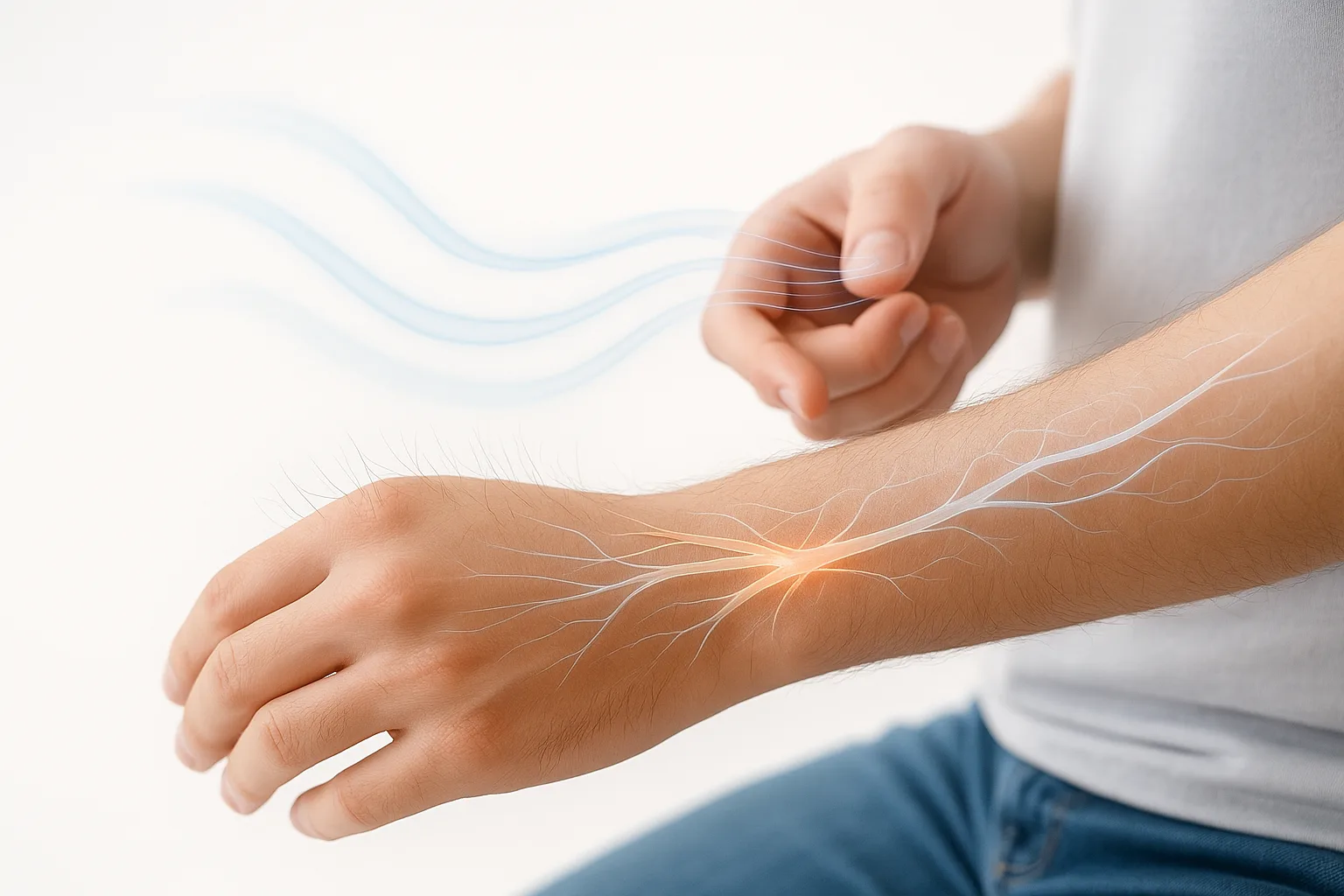The body hair sensitivity test reveals how your body still carries a powerful sensory system inherited from early mammals. Long before humans wore clothes, body hair helped detect movement, temperature changes and approaching threats. Even though modern humans have much less hair, the sensory network beneath it remains highly active.
Each hair follicle is connected to a nerve ending. When the hair bends — even slightly — the nerve sends rapid signals to the brain. This system once helped animals sense predators, wind shifts and objects moving close to their skin. Today, humans still feel these signals, even though the original purpose has changed.
Below is the complete body hair sensitivity test.
Step 1 — Choose an Area With Fine Body Hair
Good areas include:
- forearm
- wrist
- back of the hand
- lower leg
Why this matters
These regions have a dense distribution of sensitive hair follicles.
Step 2 — Sit Still in a Quiet Environment
Reduce external movement or wind.
Why
A calm environment helps isolate subtle sensations during the body hair sensitivity test.
Step 3 — Hold Your Arm Out and Wait 5–10 Seconds
Extend your arm and remain completely still.
What happens
Your hair follicles enter a neutral sensory state, ready to detect small changes.
Step 4 — Slowly Move Your Other Hand Toward the Skin Without Touching It
Move your hand closer — but keep a distance of 1–3 cm.
What you’ll notice
You may feel a faint tickle or awareness before contact.
Why
Hair follicles detect air displacement and microcurrents.
Step 5 — Gently Blow Air Across the Skin
Blow softly across the chosen area.
What changes
Even a tiny stream of air bends the hairs and activates the nerve endings.
Why
This reflex is an ancient mechanism for detecting environmental changes.
Step 6 — Lightly Brush a Single Hair With a Fingernail
Do NOT press — only graze the surface.
What happens
One hair bending is enough to send a noticeable signal to the brain.
Why
Each follicle acts as a miniature sensory antenna.
Step 7 — Try the Same Movement With Your Eyes Closed
Repeat brushing or blowing air with your eyes closed.
What changes
Your brain becomes more aware of the sensation without visual input.
Why
This heightens somatosensory processing during the body hair sensitivity test.
Step 8 — Expose the Skin to a Mild Temperature Change
Use:
- cool air
- warm breath
- a cold object held nearby
What happens
Hair follicles respond instantly to temperature variations.
Why
Early mammals relied heavily on hair for thermal regulation.
Step 9 — Notice Emotional Triggers
Think of:
- a surprising memory
- a powerful song
- a nostalgic moment
What changes
Emotional spikes can cause hairs to lift or shift slightly.
Why
The same sympathetic pathways that create goosebumps also activate hair movement.
Step 10 — What This Evolutionary Feature Reveals About You
The body hair sensitivity test highlights seven important evolutionary insights:
1. Hair follicles act as sensory antennas
Even short human hairs provide tactile information.
2. Early mammals relied heavily on hair sensing
It helped detect predators and environmental shifts.
3. Humans still carry the full neural wiring
The brain responds instantly to hair bending.
4. Sensitivity does not require long hair
The follicle itself is the sensor.
5. Emotional reactions influence hair movement
Stress and excitement activate ancient systems.
6. Temperature changes trigger rapid responses
Hair follicles helped regulate warmth in early humans.
7. Evolution leaves functional leftovers
Body hair remains a subtle but active sensory system.
The body hair sensitivity test demonstrates how your skin and hair still behave like those of early mammals — even though humans have evolved far beyond their furry ancestors.
Next Evolution Experiment You Should Try
If the body hair sensitivity test showed how your hair follicles still act as ancient sensory tools, the next experiment reveals a deeper evolutionary signal hidden in your muscles.
Recommended next article:
“The Jaw Reflex Strength Test — A Look Into Your Primate Ancestry”

